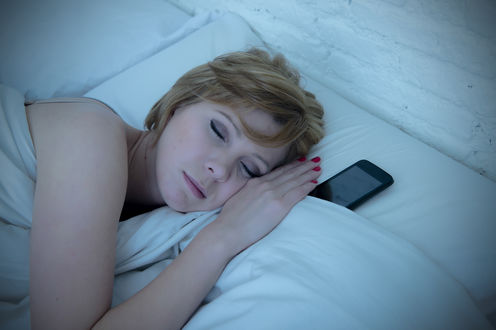
Did you sleep well last night? If your answer is “no”, there could be an app or a gadget that could help you with that.
But are they any good? Do they really monitor how much you toss and turn while trying to sleep? And can they help you improve your sleep time?
How do we track sleep?
Sleep is an important part of our well-being. A few nights of bad sleep can cause negative effects on alertness, memory and your mood throughout the day.
There are three types of devices available to help you try to monitor your sleep patterns:
- -mobile apps
- -wearable devices
- -embedded technologies.
Mobile apps track sleep through digital diaries, such as Sleep Diary, where the user has to enter their sleeping time. Apps such as SleepBot track sleep automatically through the smartphone’s orientation sensors and microphones to check for movement and sound during the night.
Wearable fitness trackers, such as Fitbit, and smart watches, such as the Samsung Galaxy Gear, also use movement and noise to track sleep. Since these devices are worn on the body, they can provide more accurate tracking than mobile apps.
Sensors can be embedded in the mattresses (Luna), bed sheets (Beddit), pillows (Sense by Hello) or into devices on the bedside table (S+). These technologies track noise, light, temperature movement and heart rate to provide more accurate sleep data.
How good are they?
With a range of devices to choose from, how do you decide which one is the best for your needs?
We looked for answers by collecting 1,152 posts from 287 users talking about their experiences with sleep tracking technology, in five online forums (BulletProof Sleep, Lifehacker, Connectedly, Gizmodo and Quantified Self).
Here’s what we found.
Understanding sleep patterns requires consistent tracking over a long period of time to identify patterns. But more than a third of the discussion was focused on the various reasons stopping users from tracking their sleep consistently. Many users said they were not comfortable with wearing a watch or a fitness tracker to bed.
Batteries were another issue. Most fitness trackers and mobile phones are designed to be used during the day and charged overnight. People reported that they lost data overnight when their battery ran out, or they found it difficult to track when they did not have a power outlet near the bed.
In our analysis many users expressed their lack of trust in the technology. We know consumer sleep trackers are not as accurate as clinical methods.
Nearly all consumer devices track sleep duration and quality based on sensors that check for body movement, which is prone to errors.
Some people reported that the tracker thought they were awake, when in fact they were asleep. The problem was that their device wrongly registered movement from their partner or a pet who was moving on their bed.
Conversely, a common error is when users are awake and lying still but the app thinks that they are asleep.
Some users tried two or more apps at the same time to get better results. But having two different sleep quality scores can make it even harder for the user to decide which technology to trust.
Many users reported that the sleep tracking apps did not allow them to edit the data in the way that they wanted. Some people wanted to add entries later on or fix errors.
The ability to export the data was not well supported by most technologies. This was a problem for those users who found the visualisations on the apps not very useful. They had hoped to be able to export the data to visualise it in a way that helped them to analyse the information. But without data export, this wasn’t possible.
The most important issue that dominated these forums was how to make sense of sleep data. Sleep trackers present a lot of information to the users, including length, sleep time for light or deep sleep, or wake time.
But many users said they had trouble understanding the information without sleep-related knowledge. They questioned what the sleep quality score meant, how many hours of sleep they really needed every day, and how many hours of deep sleep and REM (rapid eye movement) sleep they need.
Finally, many people commented that apps lacked information on how to take action to improve sleep.
Sleep tracking devices can provide people with an awareness of their sleep patterns and a possible lack of sleep. But they do not provide people with support on how they can improve their sleep. Hence one person asked what to do:
Buy a new mattress? Move to a different apartment? Work out harder?
What can be done?
Clearly there are important design considerations for future sleep tracking devices arising from our findings. Fixing things such as discomfort, battery limitations and inaccurate tracking need to be a strong focus for manufacturers.
Users want ownership of their data, including the ability to access, edit and export sleep data. Most importantly, users need support to help them understand how the technology works, what the data means and how to improve their sleep.
It is important that whatever device we take with us to bed should help us sleep well rather than disrupt our sleep.
Thuong Hoang receives funding from the Victorian State Government and Microsoft through their contributions to the Microsoft Research Centre for Social Natural User Interfaces (SocialNUI).
Bernd Ploderer is co-founder of the Melbourne Quantified Self Group. He received funding from the Victorian State Government and Microsoft through their contributions to the Microsoft Research Centre for Social Natural User Interfaces (SocialNUI). He also received funding from the Australian Research Council.
